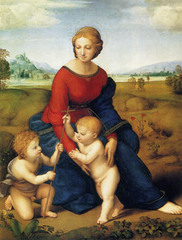
Style: Renaissance
Medium: Oil on panel
Museum/City: Kunst Historic Museum, Vienna
Connection: Inspired by Da Vinci’s geometric composition
1. Features John the Baptist and Jesus
2. The red on the madonna’s robe symbolizes christ’s death and the blue symbolizes the church
3. Raphael mainly painted madonnas like these while in Florence, which he has come to be most known for
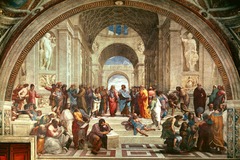
Style: Renaissance
Medium: Fresco
City: Rome
Connection: Inspired by Roman architecture and philosophers
1. The two most important figures are located in the middle are Plato and Aristotle
2. The piece features Raphael’s self-portrait
3. The piece’s goal was to unite all of the greatest thinkers so far in time in one place
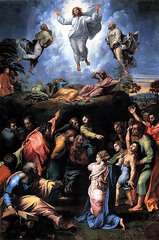
Style: Renaissance
Medium: Tempera panel
Museum/City: Vatican Museum, Rome
Connection: Inspired by Old Testament ideas and events
1. It was Raphael’s last painting
2. It was unfinished by the time Raphael died
3. It was meant to be an altarpiece
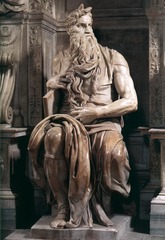
Style: Renaissance
Medium: Marble
Museum/City: San Pietro in Vincoli, Rome
Connection: Inspired by Classical Greek idealization
1. It was commissioned for a tomb piece
2. Both Vasari and Freud wrote about it
3. The depiction of horns was uncommon for Moses, stemming from a Latin translation of the Exodus

Style: Renaissance
Medium: Fresco
Museum/City: Rome
Connection: Inspired by biblical ideas and competition with other Renaissance artists
1. Michelangelo wrote about the uncomfortable conditions involved in creating the piece often
2. The piece is located in the chapel where the college of cardinals selects the new pope
3. Michelangelo used a special type of lime plaster to make his colors more vibrant
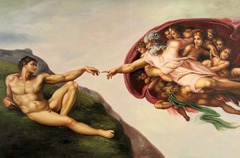
Style: Renaissance
Medium: Fresco
City: Rome
Connection: Inspired by Da Vinci’s dissections and depictions of the muscular human form
1. The painting has come to symbolize man’s relationship with god
2. One of the most parodied and recreated paintings of all time, along with The Last Supper
3. Adam is posed similarly to god to symbolize that he was created in god’s likeness
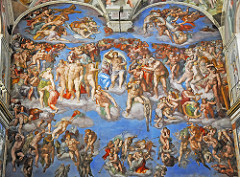
Style: Renaissance
Medium: Fresco
City: Rome
Connection: Inspired by biblical ideas and Dante’s writings
1. The loincloths worn by the figures were added later to maintain modesty
2. The skin being hung in the middle of the painting is Michelangelo’s self-portrait
3. Michelangelo portrayed his figures intentionally disproportionate to “mock” religion at the time

Style: Renaissance
Medium: Marble
Museum/City: Church of San Lorenzo, Florence
Connection: Influenced by the four parts of a day and Classical Greek idealism
1. The owl and mask under the figure are used to symbolize dreams
2. The figure rests on a sarcophagus
3. The female form, as shown in Night, was one of Michelangelo’s only known artistic weaknesses
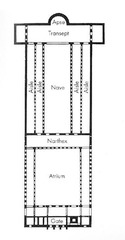
Crossing: Transept
Central Space: Nave
Side Compartments: Aisles
Beginning Crossing: Narthex
Vestibule: Atrium

Style: Renaissance
Medium: Stone
City: Rome
Connection: Inspired by Gothic architecture and Latin cross
1. The original plan was designed by Bramante
2. One of the world’s largest churches
3. Worked on by well-known Renaissance artist Bernini

Style: Renaissance
Medium: Oil on panel
Museum/City: Cathedral of Castelfranco, Veneto
Connection: Inspired by Da Vinci/Raphael’s triangle composition
1. Was designed as an altarpiece
2. Was painted the year of the artist’s execution
3. Paid homage to the artist’s Italian hometown
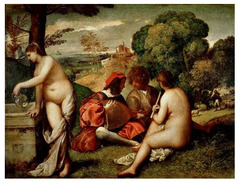
Style: Renaissance
Medium: Oil on canvas
Museum/City: Louvre, Paris
Connection: Inspired Titian’s smooth oil paintings with bright colors
1. The painting was secular, unusual for the time
2. The lack of attention to the women by the men is an uncommon depiction
3. The painting has an unusual perspective, odd compared to the perfect linear perspective used by other colors

Style: Renaissance
Medium: Oil on canvas
Museum/City: Church of the Frari, Venice
Connection: Inspired by Giorgione’s delicate oil painting
1. It is the largest altarpiece in the city of Venice
2. It features three distinct levels, similar to hierarchical design
3. It features bright colors, a common characteristic of the Venetian Renaissance
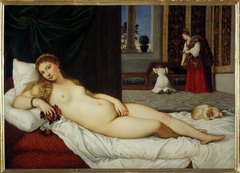
Style: Renaissance
Medium: Oil on canvas
Museum/City: Uffizi, Florence
Connection: Giorgione’s depictions of Venus
1. Mark Twain wrote a scathing passage on it
2. Venus’ unapologetic nudity has proven controversial
3. The painting differs from Greek depictions, being less graceful
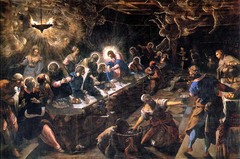
Style: Mannerist
Medium: Oil on canvas
Museum/City: San Giorgio Maggiore, Venice
Connection: Leonardo Da Vinci’s depiction of the same scene
1. This is one of many of the artist’s depictions of this scene
2. The painting’s composition differs greatly from the triangle composition of the time
3. The odd light source and dark and bright colors are characteristic of the mannerist style
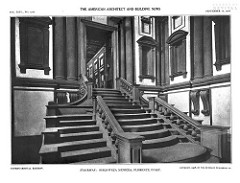
Style: Mannerist
Medium: Wood/stone
City: Florence
Connection: Influence of the Medici family
1. It is one of the rare examples of Mannerist architecture
2. It’s awkward composition fits with the paintings of the time
3. Michaelangelo finished a very small part of the library, though it is attributed to him
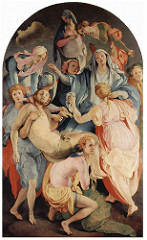
Style: Mannerist
Medium: Oil on wood
Museum/City: Church of Santa Felicita, Florence
Connection: Hellenistic emotion
1. Pontormo studied with Da Vinci, which is not shown in many of his awkward and distorted paintings, unlike those of Da Vinci
2. The bright colors are characteristic of the style
3. It is Pontormo’s most famous work
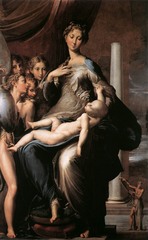
Style: Mannerist
Medium: Oil on wood
Museum/City: Uffizi, Florence
Connection: Emotion in Michelangelo’s Pieta
1. The baby christ is sometimes thought to be dead, due to his pale color and limp form
2. The madonna displays unusual proportions, having an abnormally long neck and fingers
3. The purpose of the small prophetic figure in the corner is unknown, other than for religious symbolism
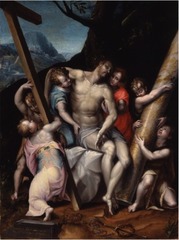
Style: Mannerist
Medium: Oil and tempera on wood
Museum/City: Rollins College, Lakeland, Florida
Connection: Michelangelo’s emotion in his Pieta
1. The simultaneous bright and dark color palette is characteristic of the Mannerist style
2. Christ is larger than the other figures, showing a sort of hierarchical scale
3. The religious symbols include a whip, the cross, the column, the nails, etc

Style: Mannerist
Medium: Oil on canvas
Museum/City: Gottfried Keller Collection, Bern, Switzerland
Connection: Later influenced the Baroque style
1. The portrait was a request from Spain’s king of the time
2. It is a rare example of Renaissance portraiture
3. Vasari wrote about the artist’s immense talent
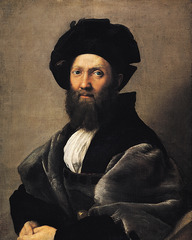
Style: Mannerist
Medium: Oil on panel
Museum/City: Louvre, Paris
Connection: Inspired by humanist ideas
1. Raphael met the humanist through native connections
2. The subject of the painting was known for his humanist work, The Courtier
3. Considered one of the most important portraits of the Renaissance
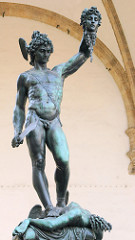
Style: Mannerist
Medium: Bronze
Museum/City: Loggia del Lanzi, Florence
Connection: Inspired by Greek mythology
1. It was sculpted for Cosimo de Medici
2. One of the first sculptures to include the base as an important part of the sculpture
3. Perseus hold the head of Medusa, his notorious foe





